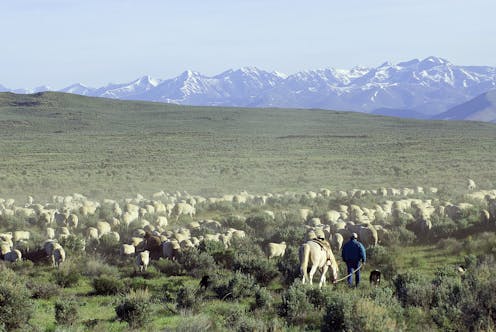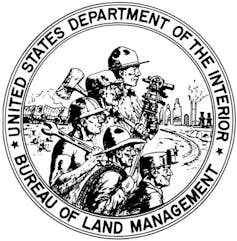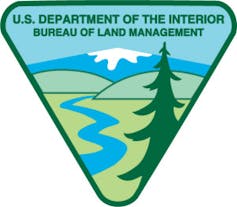Moving Bureau of Land Management headquarters to Colorado won't be good for public lands
Do public lands in the West belong to Westerners, or all Americans? Moving a federal agency's headquarters from Washington, DC to Colorado is the latest skirmish in a longtime struggle.

The Trump administration has pursued many controversial goals in managing U.S. public lands, including shrinking national monuments and cutting back protection for threatened species. Its latest disruptive move targets the government employees who oversee these resources.
The Department of the Interior’s Bureau of Land Management oversees 245 million acres of public lands, mainly in the western U.S. The Trump administration is moving BLM’s headquarters from Washington, D.C. to an office building in Grand Junction, Colorado that also houses oil and gas companies. Along with increasing energy development, reducing regulations and increasing access to public lands, agency officials call this move one of their top priorities.
More than 95% of BLM employees work in the West. So why is it a top priority to move senior staff away from Washington, D.C., where policy decisions are made? And why are conservation groups and former BLM officials strongly opposed?
As scholars who study BLM and public land management, we see this move as a radical transfer of control over national resources to Western states. Congress has tasked the agency with managing public lands “so that they are utilized in the combination that will best meet the present and future needs of the American people.” In our view, the headquarters move runs counter to this goal.
The interests of ‘private government’
As the Trump administration likes to point out, BLM lands are almost exclusively in the West. The agency’s governing statute directs it to manage those lands in ways that will protect their “scientific, scenic, historical, ecological, environmental, air and atmospheric, water resource, and archaeological values,” and will support land and wildlife conservation. They are also open for outdoor recreation and extractive uses, such as grazing, mining, oil and gas development and timber harvesting.
Up through the late 1960s, the federal government encouraged “home rule” of these resources, meaning that rural communities, natural resource industries and Western state governments controlled public land policy. Political scientist Philip Foss described this approach as “private government” – a system in which interest groups effectively controlled agencies charged with overseeing and regulating public assets. And those groups overwhelmingly prioritized extractive land uses over conservation.


BLM’s first emblem, which it used from 1952 to 1964, reflected this philosophy. It depicted a miner, a rancher, an engineer, a logger and a surveyor standing on the American frontier with Conestoga wagons behind them and an industrial landscape ahead.
In 1964 the agency created a new emblem that depicted mountains, meadows, a river and tree. BLM continued to encourage natural resource development, but it also gradually came to serve an increasingly broad constituency. Once derided by conservationists as the “Bureau of Livestock and Mines,” it became what former Arizona Governor and Interior Secretary Bruce Babbitt would see as an agency also concerned with landscapes, monuments and conservation.
Constituencies in a changing West
This evolution has angered some conservatives in the West and fueled armed confrontations between public lands users, such as rancher Cliven Bundy and BLM staff. In what we view as an egregious example of catering to some Western interests, acting BLM Director William Perry Pendley stated in November 2019 that his agency’s law enforcement professionals would defer to their local counterparts, apparently even on federal land.
But although Western land management often is cast as a standoff between competing federal and regional priorities, in reality the issue is much more complicated and nuanced. There also are tensions in the West between residents who value public lands as sites for resource extraction, others who see economic opportunity fueled by a growing recreation economy and still others who appreciate these areas for their ecological value and intrinsic beauty.
A self-inflicted brain drain
The job of BLM leaders in Washington, D.C. is to make decisions that respond to directives from the president and Congress. Moving them west won’t change that dynamic – but it could impoverish agency decision making in several ways.
First, senior agency staff will have more difficulty communicating with Congress. Second, the White House and Congress will still make broad policy decisions about public lands, but they will do it with less input from knowledgeable and experienced career professionals.
And by forcing government employees to either move to the West or find other jobs, moving the BLM headquarters will effectively gut its staff without running afoul of civil service protections. White House Acting Chief of Staff Mick Mulvaney admitted as much in an August 2019 speech:
“By simply saying to people, ‘You know what, we’re going to take you outside the bubble, outside the Beltway, outside this liberal haven of Washington, D.C., and move you out in the real part of the country,‘ and they quit — what a wonderful way to sort of streamline government.”
Mulvaney was describing a decision earlier in 2019 to relocate two U.S Department of Agriculture research agencies – the Economic Research Service and the National Institute of Food and Agriculture – from Washington, D.C. to Kansas City. More than 60% of affected staffers refused to relocate and quit, leading to a loss of expertise for both organizations.
We expect BLM’s move and resulting staff losses will similarly diminish the agency’s capacity to manage complex policy decisions. At the request of Democratic members of Congress, the Government Accountability Office is investigating whether BLM has adequately justified moving its headquarters.

Diluting federal oversight of public lands
President Trump’s public land policies align with coordinated challenges to federal authority, known as sagebrush rebellions, that have been part of the American West for more than a century. Trump campaigned in 2016 on a platform that called for transferring control over public lands to the states. He later pardoned Oregon ranchers Dwight and Steven Hammond, whose conviction for committing arson on federal lands helped spark the 2016 armed occupation of the Malheur National Wildlife Refuge.
Undermining the BLM’s professional capacity and returning public lands management to “home rule” fits naturally into this list. But we believe it is ultimately counterproductive. It will damage careers, impede democratic deliberation and undermine experienced oversight of public lands that belong to all Americans.
[ Deep knowledge, daily. Sign up for The Conversation’s newsletter. ]
John Freemuth receives funding from USGS. He is affiliated with the Andrus Center for Public Policy at Boise State University, which receives funding from the BLM Office of Wildland Fire.
James R. Skillen does not work for, consult, own shares in or receive funding from any company or organisation that would benefit from this article, and has disclosed no relevant affiliations beyond their academic appointment.
Read These Next
Karoline Leavitt’s White House briefing doublethink is straight out of Orwell’s ‘1984’
A historian analyzes how White House press secretary Karoline Leavitt’s claims about her boss and…
Where the wild things thrive: Finding and protecting nature’s climate change safe havens
Protecting places that are likely to remain cool and moist as global temperatures rise can save wildlife…
Billionaires with $1 salaries – and other legal tax dodges the ultrawealthy use to keep their riches
The richest Americans can largely avoid paying income and other taxes. A new book explains the history.






